Wayne C. Allen's Blog, page 33
February 13, 2016
The Cool Heat of Passion
This is post 7 of 7 in the series “A Way Inside”
Synopsis: Passion is an internal process, despite the normal usage, and the press it gets.

Of late, I’ve been talking with a series of friends about passion, and it’s interesting how easy it is to get off track. As in, the person speaks of their passion, then makes its “intensity” dependent on externals.
One person was wondering about “keeping passion alive in a relationship,” for example.
Another had been in a relationship that was not as much fun anymore, in terms of “the quality of sex decreased over time.”
And yet another spoke of no longer being passionate about his job.
Implicit in all of this are several fallacies, and a couple of missing pieces.
When we talk of passion, our normal language implies “passion about.”
“He turns me on,”
“I’m passionate about reading,”
“It was a night of passion.”
It’s pretty clear, however, that at some base level, we feel what we feel, and then we make it about the thing–the object.
Even when we know better.
Even to say, “The passion has gone out of our relationship” is to suggest that something has happened to me–that an external has let me down.
 He doesn’t do it for me…
He doesn’t do it for me…A long time ago, I worked with an 18-year-old who was 6 months or so into a new relationship. She spoke the above line about passion having gone bye-bye.
I asked her what she was doing about it.
“I tell him, ‘All the passion has gone out of our relationship, and you need to fix it,’ but it doesn’t work!!”
I suggested we play a game. I’d repeat her line, and she’d tell me what she’d do to fix things.
Me: All the passion has gone out of our relationship, and you need to fix it.
Her: I’ll meet you at the door dressed in a negligee.
Me: Nice negligee, but all the passion has gone out of our relationship, and you need to fix it.
Her: I’ll blindfold you and take you to bed, and make wild, passionate love to you!
Me: Love the blindfold, and you’re good in the sack, but all the passion has gone out of our relationship, and you need to fix it.
Her: (after a few more attempts, and with no little anger) Well, what the hell do you want me to do?
Me: Maybe your boyfriend is wondering the same thing.
Writ large, her issue was that her level of passion had dropped, and she assumed that “it” (an external–in this case, her boyfriend) was not “working right.” Which may or may not have also been true, but clearly, it was her “it” that wasn’t being scratched.
So, she needed to figure out what she was doing to shut herself down.
Which is the key. Passion, like everything else, is 100% self-generated. We turn ourselves on, we turn ourselves off, we really get into something, or not, and the “it” we’re into is irrelevant.
Passion is as we do
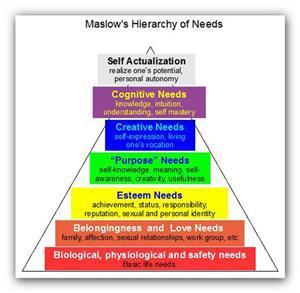
This entire series had been about self actualization, if you will. Maslow used that term to describe the ultimate category in human development, and he meant that the ultimate realization is that we are… SELF actualized. Not that, at the pinnacle, we become self actualized, but that we realize that we already are.
My buddies Ben Wong and Jock McKeen used to talk and write about this topic, and would say that “charge” (the heated experience we often confuse with passion) faded with time. They were clear that it wasn’t time per se that caused this, but rather that, as we got to know someone intimately, the novelty wore off. This let to a drop in charge, which requires objectification of an other.
With greater depth of intimacy came the warmth (not heat) of knowing and being known. But for many, that just couldn’t compare with the flaming fires of passion.
Life presents us with this choice, endlessly. Will I throw myself into new things just for the charge, or will I go for depth, which requires patience and time? Will I evaluate my level of enjoyment, and then blame others, or will I have a breath, ask for what I need, and re-invigorate myself?

The problem with charge (which, again, many people confuse with passion) is that it’s chargy. It’s blindingly hot. It’s addictive.
A few of my friends have been dabbling with polyamory, and where they stick is precisely on this issue. It’s not the sex, or even the sex with multiple partners… it’s the charge seeking.
What I mean is, my friends are searching for depth and intimacy, and they find that their principal partner is not so keen. Their partners want charge, and risk, and drama. Because, I suspect, it’s distracting.
Distracting from what, you ask? From the hard work of self exploration, depth and self actualization.
I’m not saying that polyamorous people can’t find depth. I’m saying that, in these two cases, depth is too intimate, too revealing. So, each of the two partners settle for a huge jolt of charge. And wake up the next day needing another fix.
As usual with our discussion, I’m not making charge wrong and intimacy or depth right. I’m just saying that often, with concept pairs like this, it’s like a coin. At any one point you can have heads, or you can have tails. Not both. They are mutually exclusive in each moment.
Of course, you can multi-task your relationships–doing the polyamory bit for the charge, and then spending the requisite time engaging with a principal partner on relational depth. But ultimately, because of the rule of intimacy (charge decreases as intimacy grows) you’ll end up with chargy relationships with others, and depth “at home.” Which may come as an unwelcome shock.
Still one side of the coin, just different sides with different people.
I actually think there is something to be said for some external experimentation like this, but that’s for another article.
What is important is you, and what you seek to accomplish in this lifetime. If you are looking for depth, self knowledge, and self actualization, the path is different than if you choose the “charge path.”
That’s all.
And if you choose the inward path, then let’s say 95% of your time and energy needs to be focussed there. It’s like dieting. You can have a “cheat meal” once a week and make progress. If you cheat 95% of the time, you will gain weight. So, despite how good the charge feels, you have to come back to your path.
Like with my client, described above. Her level of charge was lowering over time, and her initial gambit was to blame her partner, and to expect him to fix it. The actual solution was simple.
She accepted that, over time, her level of charge would diminish. She committed to owning that, and accepting reality as… reality. She committed to self exploration, and to asking her partner for what she needed, each time. She recognized that she turned herself on, and needed to take responsibility for herself.
And this applies to the whole enchilada, in and out of the sack.
The path we promote is not made up of one series of charges after another. As I described a couple of weeks ago, it’s really like learning to meditate. You just commit to doing what you need to do. Depth (and meditation!!) lacks excitement, but it sure has passion, focus, and knowing going for it.
And, of course, have your cheat days, and your chargy moments, set up by you, for you, because hey, why not??
There’s a Zen story of three monks who spent decades travelling together. One day, one of them died.
They went to the Zen Temple, the remaining two preparing the dead monk’s body for cremation’s flames. They sobbed as they worked, and some observers wondered about their grief, being Zen monks and all.
The monks did what they did, with full intensity and commitment.
Finally, the fire was lit, and the dead monk’s body was consigned to the flames. Suddenly, skyrockets erupted from the pyre, and the sky was illuminated with fireworks.
The monks, who had hidden skyrockets in the dead monk’s robes, laughed and laughed.
In depth, there is also light. And skyrockets in flight. And perhaps… afternoon delight!!
Want depth and meaning? Read my books!
div.wpob_template_main.wpob_template_main_1{display: none;}
.wpob_template_main_1{
background-color: #fff;
max-width: 750px;
height: 310px;
border-width: 7px;
border-color: #ccc;
margin-top: ;
margin-bottom: ;
margin-left: ;
margin-right: ;
}
.wpob_template_main_1 .wpob_box_heading{
background-color: #8f0a0b;
}
.wpob_template_main_1 .wpob_box_heading_text{
font-family: 'Shadows Into Light', serif;
font-size: 24px;
line-height: 40px;
color: #fff;
text-align: center;
text-transform: uppercase;
font-weight: 900;
margin: 0;
}
.wpob_template_main_1 .wpob_box_media_container{
display: inline-block;
width: 120px;
height: 164px;
}
.wpob_template_main_1 .wpob_box_content_container{
}
.wpob_template_main_1 input.wpob_input_fields{
width: 200px;
line-height: 36px;
margin-bottom: 5px;
border: 1px #ddd solid;
vertical-align: middle;
font-size: 16px;
color: #999;
font-size: Arial;
padding: 0px 8px;
}
.wpob_template_main_1 .wpob_box_image{
width: 100%;
height: 100%;
}
.wpob_template_main_1 .wpob_box_media_center{
display: block;
margin: 0 auto;
padding: 10px;
}
.wpob_template_main_1 .wpob_box_media_right{
float: right;
padding: 10px 0px 10px 20px;
}
.wpob_template_main_1 .wpob_box_media_left{
float: left;
padding: 10px 20px 10px 0px;
}
.wpob_template_main_1 .wpob_box_content{
font-family: Fjalla One;
font-size: 18px;
line-height: 24px;
color: #333;
text-align: center;
padding: 1em;
}
.wpob_template_main_1 .wpob_box_button_div{
text-align: center;
padding: 0em 1em 1em 1em;
}
.wpob_template_main_1 .wpob_box_button_div a.wpob_box_button, .wpob_template_main_1 .wpob_box_button_div button.wpob_box_button{
font-family: Georgia;
font-size: 18px;
color: #fff;
background-color: #0c8442;
border-radius: 5px;
width: ;
padding: 10px 15px;
}
.wpob_button_gradient{background-image : -moz-linear-gradient(top, #0c8442, #057538);background-image : -ms-linear-gradient(top, #0c8442, #057538);background-image : -webkit-gradient(linear, #0c8442, #057538);background-image : -webkit-linear-gradient(top, #0c8442, #057538);background-image : -o-linear-gradient(top, #0c8442, #057538);background-image : linear-gradient(top, #0c8442, #057538);filter : progid:DXImageTransform.Microsoft.gradient(startColorstr="#0c8442", endColorstr="#057538", GradientType=0);border-color : +#0c8442 #057538 #057538;background-color : #0c8442;}
A Shameless Bribe!!

Receive The Pathless Path by e-mail!
As a thank-you, we'll send you a link to our pdf booklet, Exercises in Consciousness.
What could be better than that??
Cick and Join Us!
The post The Cool Heat of Passion appeared first on The Pathless Path.
February 6, 2016
The Use of Dialogue
This is post 6 of 6 in the series “A Way Inside”
Synopsis: Dialogue is a tool for self-exploration. It’s not a way to get others to behave, but rather a way to self-explore.
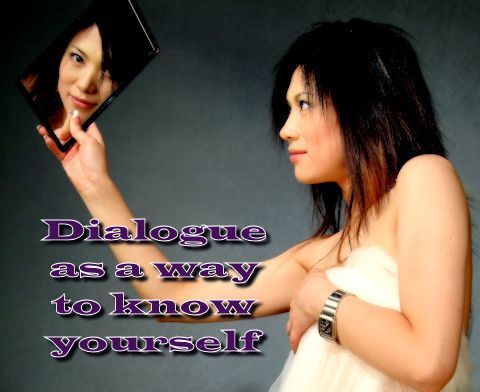
Needless to say, I’ve written a ton of articles about communication and dialogue. I’ve focused on communication in all of my books, and can state categorically that good communication skills are absolutely essential for building and maintaining a relationship.
This series has been and continues to be individual-focussed, so talking about “dialogue” could be confusing.
If so, let’s clear it up!
The key to inner exploration is the willingness to seek out and listen to feedback. Of course, this comes with the caveat that the person you are in dialogue with is worth listening to.

I once worked with a couple with terrible communication. We tried and tried, but they stayed stuck, and eventually separated. She returned periodically for whatever it was we did.
I could never figure it out, because she didn’t absorb much of anything.
She’d let me talk for a bit, then she’d cut me off with:
1) “I know that!” or
2) “I’d already decided to do that before you said that.”
Pretty much, “I know everything, and it’s so weird that things never work out for me.”
My favourite exchange happened during her last session, which was several months after her separation. She’d called her ex, and it hadn’t gone well.
“I called him to check in on him, and he wouldn’t do what I said! I mean, he never listened to me when we were married, and now we’re separated, and he still won’t listen to me!”
It seemed to be beyond her to “get” the idea that her job was not to educate others–it was to educate herself.
This is the basis of true dialogue.
Let’s face it. Our heads chatter at us incessantly. There are really only three flavours of chatter: information, praise, or blame. The latter two can be sub-divided into self-praise / blame and other praise / blame, but really, the important part to get is that it’s all us, all the time.
That said, there is a great appeal to focussing on “the other.”
Of course there is! It gets us off the hook for regulating ourselves. Of course, I’m not excusing the bad behaviour of others… I want to remind you that the only behaviour you can modify is your own.
Others are such convenient targets, though! I remember a client making the decision to stop endlessly criticizing her husband’s every breath. The next week, in she came, full of tales of his misbehavior and her rant. I reminded her of her commitment the previous week.
“Well, yes, I did say that, but this was so bad anyone would have jumped down his throat.”
Because, her job, I guess.
Not.
Profitable dialogue can be conducted with anyone, anywhere, but really, your job is to find 2 or 3 people you can be, in Haven-speak, “open, honest, and vulnerable” with.
One of those ought to be your principal partner, assuming you are in a relationship.
Of course! Why else would you be in a relationship? Given what I’ve written above, though, you need to understand clearly that the dialogue is not about blaming, correcting, saying something for “his / her” own good.
This is true for all great dialogue, but especially for primary partners. They’re not broken, and you’re not the repair shop.
Here’s a short section on Dialogue from my book, This Endless Moment:
Awareness and presence is the essence of all dialogue. Dialogues are special, mostly because so few of us ever have one. Mostly we engage in sequential or simultaneous monologues.
There are really only two purposes for dialogue. One is to solve a problem. The other is to share information about the only thing I can share information about – myself.
The opposite of dialogue is fighting. The difference between a dialogue and a fight is intent.
There are one-sided fights and two-sided fights. A one-sided fight happens when one person endlessly corrects and lectures and “persuades,” while the other person says, “Yes, dear.” It’s a “fight” because the recipient has no intention of doing what (s)he has agreed to. You might think of it as bullying and placating.
A two-person fight is always about “who is right.” Which is odd, because, as we’ve noted, there are only personal opinions, wants and desires. It’s like that famous scene in the movie “Annie Hall,” split screen, Woody on one side, Diane on the other, each talking to their shrink. Woody: “She never wants sex – only 3 times a week.” Diane: “He always wants sex – 3 times a week!”
Such discussions are unsolvable, of course, because there is no “right” number of sexual encounters per week. There’s just what’s happening and how I interpret it. Similarly, there is no “right” way to raise a child – there’s just what works. There is no “right” way to communicate – just ways that work and ways that don’t.
Let’s be clear here: a discussion about an issue and a fight about who is “right” about the issue is not the same thing.
Good dialogue requires the willingness to be direct. Direct communication can be blunt communication. It is always simple communication, noticeably devoid of sub-plots or outside opinions. “Everyone knows…” is not direct. “I think…” is.
People who learn communication at Haven often use the words “open, honest and vulnerable” to describe good communication, or dialogue. They interrelate in several ways, not the least of which is this: I can only be as honest about me as my openness and vulnerability allow.
I’m amazed at how many people think that honesty is a bad thing. It’s sometimes put as a power statement: “I would feel pressured if I had to tell him everything.” Other times, it’s a privacy issue: “I have a right to my privacy.” Or an embarrassment issue: “Well, I couldn’t tell anyone that!” Or, tit-for-tat: “I’m not going to be honest unless she is.” Endless and amazing are the excuses for lying.
Dar and I have only one “line in the sand” (a standard which, if broken, would mean the end of our relationship) and that is, total honesty. We decided, when we first started dating, and have reiterated with each other since, that honesty is not only the best policy, it’s the only policy.
That being said, we want to remind ourselves of the point made in the section “The Poignancy of the Now.” (pg. 59) Our commitment is to total honesty – and I can only be totally honest about what I know today. Thus, I agree with Gandhi, who once said something like, “I promised you the truth as I know it today, not consistency.”
I hope you begin to see how “truth” can only play out in honest, open, vulnerable dialogue. And the only “truth” I know is the truth of me, in this moment. That truth is totally encapsulated in the stories I tell myself, in the feelings I generate in myself, and in the thoughts I drive myself with. None of this “has to be.” All of this is as I create it.
Openness is the willingness to shine a light on myself. If I am open, I am willing to be clear about all aspects of myself. Vulnerability adds to this: I am even willing to admit to the scary, strange, weird, nasty, manipulative parts. I am willing to tell you how I hurt myself. I am willing to risk it, because this is what true dialogue, communication and relationship requires.
Of course, I get to choose who I am in true dialogue with. Many people come back from one of our Communication Workshops or from Haven with the idea that they are supposed to be open, honest and vulnerable, say, with the grocery clerk. This is simply not so. I might choose to be clear and honest with pretty much everyone, but that won’t include sharing my inner theatre with them. I don’t even do that with my parents. I choose open, honest vulnerability with people I trust to be so with me.
Dialogue is a tool that allows me to pay attention to myself and to share what I discover with a small and select group of friends. The real reason for the dialogue is so that someone else is witnessing what I am doing and thinking and interpreting. Then, when I get off track and lose clarity with myself, my friend(s) can call me on it, typically by asking me why I am making the choice I am making. And I can do the same for them.
Left to our own devices, we pretty much tell ourselves what we want to hear. We can get so wrapped up in the story that we miss what’s “really” going on. Regular, focused dialogue is a discipline designed to commit me to being much more open about the details – the “why” in “why are you telling yourself that story?”
The meaningfulness of what is discussed shifts and changes; the meaning of the dialogue itself remains constant. It is this: in dialogue, I find, listen to and reveal myself. Not for approval or validation. Only I can do that for myself. The dialogue is a way of learning ever again that I am safe being me. I am OK being me.
In the company of friends, dialogue frees us from the burden of paddling alone. There is, by agreement, acceptance as opposed to “right and wrong,” manipulation and blame. Because, of course, there is no one to blame. There is just this moment and the next, and the story I tell. And if perchance I sadden myself with the story, I can remember Gandhi, and simply tell myself (and my friends) another one. Each equally valid. Each equally “true.” The only mark of the worth of a story, you see, is in the result.
This week, think about setting up a dialogue agreement with no more than 3 people. The agreement is to meet regularly, to take turns describing your “sticking points,” and to listen to your partner(s) as they provide feedback.
No defending, explaining, justifying.
Just listen, and take in. Then, try clarifying your position from a place of gentleness and “non-knowing.” Be curious about yourself and your process, as opposed to trying to justify why you continue to do what does not work.
Have a breath, listen some more, and then, pick something you can test out — some different behaviour — to see what happens.
Then, do it!
div.wpob_template_main.wpob_template_main_1{display: none;}
.wpob_template_main_1{
background-color: #fff;
max-width: 750px;
height: 310px;
border-width: 7px;
border-color: #ccc;
margin-top: ;
margin-bottom: ;
margin-left: ;
margin-right: ;
}
.wpob_template_main_1 .wpob_box_heading{
background-color: #8f0a0b;
}
.wpob_template_main_1 .wpob_box_heading_text{
font-family: 'Shadows Into Light', serif;
font-size: 24px;
line-height: 40px;
color: #fff;
text-align: center;
text-transform: uppercase;
font-weight: 900;
margin: 0;
}
.wpob_template_main_1 .wpob_box_media_container{
display: inline-block;
width: 120px;
height: 164px;
}
.wpob_template_main_1 .wpob_box_content_container{
}
.wpob_template_main_1 input.wpob_input_fields{
width: 200px;
line-height: 36px;
margin-bottom: 5px;
border: 1px #ddd solid;
vertical-align: middle;
font-size: 16px;
color: #999;
font-size: Arial;
padding: 0px 8px;
}
.wpob_template_main_1 .wpob_box_image{
width: 100%;
height: 100%;
}
.wpob_template_main_1 .wpob_box_media_center{
display: block;
margin: 0 auto;
padding: 10px;
}
.wpob_template_main_1 .wpob_box_media_right{
float: right;
padding: 10px 0px 10px 20px;
}
.wpob_template_main_1 .wpob_box_media_left{
float: left;
padding: 10px 20px 10px 0px;
}
.wpob_template_main_1 .wpob_box_content{
font-family: Fjalla One;
font-size: 18px;
line-height: 24px;
color: #333;
text-align: center;
padding: 1em;
}
.wpob_template_main_1 .wpob_box_button_div{
text-align: center;
padding: 0em 1em 1em 1em;
}
.wpob_template_main_1 .wpob_box_button_div a.wpob_box_button, .wpob_template_main_1 .wpob_box_button_div button.wpob_box_button{
font-family: Georgia;
font-size: 18px;
color: #fff;
background-color: #0c8442;
border-radius: 5px;
width: ;
padding: 10px 15px;
}
.wpob_button_gradient{background-image : -moz-linear-gradient(top, #0c8442, #057538);background-image : -ms-linear-gradient(top, #0c8442, #057538);background-image : -webkit-gradient(linear, #0c8442, #057538);background-image : -webkit-linear-gradient(top, #0c8442, #057538);background-image : -o-linear-gradient(top, #0c8442, #057538);background-image : linear-gradient(top, #0c8442, #057538);filter : progid:DXImageTransform.Microsoft.gradient(startColorstr="#0c8442", endColorstr="#057538", GradientType=0);border-color : +#0c8442 #057538 #057538;background-color : #0c8442;}
A Shameless Bribe!!

Receive The Pathless Path by e-mail!
As a thank-you, we'll send you a link to our pdf booklet, Exercises in Consciousness.
What could be better than that??
Cick and Join Us!
The post The Use of Dialogue appeared first on The Pathless Path.
January 30, 2016
On Just Sitting
This is post 5 of 5 in the series “A Way Inside”
Synopsis: Just sitting is a way of exploring what lies beneath meditation, and beneath life itself

In this series of articles, I’m writing about waking up, and how our upbringing and nature cause us to shut ourselves down. One way we do this is to assume that the stuff of life is here for us–personally.
In other words, rather than seeing ourselves as a part of something, we see everything as here for us to play with. So, for example, something simple, like meditation, is declared to have a “point,” and that point is to be of service to me.
If you want to see this, try Googling “meditation.” What you’ll see is a myriad of organizations, ideas, and “reasons for meditating.” A simple thing has become what is described in the Tao as “the 10,000 things.”
Thanks to the Mindfulness movement, meditation has become a “tool” designed to aid digestion, reduce stress, cure phobias, and fix what ails you. This fits with the decidedly western notion that what we do ought to have a “goal.”
Which is not to make goals wrong. It’s to say that the beginning of wisdom is to be able to see that there is something else going on.
We are trained to become identified with the story we tell ourselves, as I’ve been writing, and that in turn leads to us seeing everything through the lens of “me.” How does this serve me? What will I get out of it? How can I use this to my advantage?
And beneath this, almost unnoticed, is the energy in which we swim
The Taoists talk about it as an energy field from which “things” (including us!) arise. Energy becomes manifest–it is contained in the thing that arises. In the Tao te Ching, the writer uses a cup as an example:
XI (trans. Ted Wrigley)
We fire clay to make a cup,
But we use the empty space in the center
We build walls to make a room,
But we use the empty space they surround
We form a wheel to spin,
But we need the axle hole to use it
The point:
Having something is good only to the extent
That it makes nothingness usable
Here’s part of the introductory section:
I (trans. Ted Wrigley)
A path is just a path, a name is just a name
What is, is, without sense or differentiation
And only divides itself into things [often trans. ‘the 10,000 things’–WCA] when we give names
Forget the names of things and you sense fit and flow
Use their names and you see uniqueness, significance
Each perspective is as true as the other
(For more on the Tao, see my book, Half Asleep in the Buddha Hall)
The assigning of names is a human activity, and I’ve written about this in this series. The names aren’t really a problem; that comes with the assigning of categories: good / bad, for example.
The Tao tells us that names are one side of a coin, and Tao (the underlying stillness) is the other. Focus exclusively on one, and it`s hard to see the other.
Why we meditate
Without getting into “right,” one might choose to use meditation as a way–to shift gears enough to see the underlying nature of being. That was certainly it’s original “face.”
Things have changed.
At the start of this article, I mentioned how many different types, and places, and “reasons for” meditation there are, and it wouldn’t be hard for me to “like” some, and “dislike” other types, or styles.
That there are many types is neither good nor bad. It just is. Finding the need to judge one over the other, on the other hand, kind of takes us away from the essence.
For several years Darbella and I studied a family style of Tai Chi, and enjoyed it. Then we moved, and decided it was too far to drive to get to the class. A while later we found another school, this one an institutionalized brand of Tai Chi that shall remain nameless.

We went, and learned their short set of moves, which was different from what we knew (in the order of the moves) and slightly different regarding the moves themselves. I found myself occasionally reverting back to what I knew, and this seemed to annoy the wife of the guy teaching us.
Eventually, she stormed up to me and demanded to know what I was doing there, and that I “…wasn’t allowed to teach this style, and I’m watching you!” All this judgement, both over style and substance.
Weird, as all I was doing was moving my hands a bit differently from what she was used to
This would be the “good / bad” thing, writ large. She’d made some rather strange speculations about me and my motives, and then just clobbered me with them. Labels get in the way.
Shikantaza
Shikantaza is a Japanese word that is popular in Soto Zen (a school of Zen.) It roughly translates as “only just precisely sitting.” Or, as I put it, “just sitting.” In this school of thought, just sitting is equivalent to waking up.
In other Zen schools, zazen (meditation) might be taught using props or techniques — chanting, counting breaths, doing mudras (hand positions.) In Mindfulness meditation, goals are stressed, or better, outcomes–like lower blood pressure, for example. In these cases, meditation is a tool to get someplace else.
This is done for a reason
Because of our tendency to both label and judge, it’s easy to get confused when our minds don’t do what we think they ought to do. For example, many think that the point of meditation is to quiet the mind. And when they discover how difficult that is, well, “I just can’t meditate,” or “I must be doing something wrong” pops to the fore.
So, the other meditation schools came up with techniques to distract the mind–by giving the mind something to do, like counting breaths, or whatever. They realized that, without a target, the mind is going to wander, and obsess, and story-tell, and this could lead to a not so good experience.
To toss a bit of Tao into the mix, though, wandering is what the mind does, (it is the nature of mind) so therefore, fighting it with techniques is likely doomed to failure.
Shikantaza suggests an alternative (not right or better) and that is to just sit. And observe. To see the nature of mind.

And that nature is restless, at least to begin. It’s called monkey-mind, and if you’ve seen monkeys in the wild, you’ll know that they often are restless, and moving from branch to branch.
With shikantaza, you sit, and you watch your mind. You may have an image of clouds moving across the sky. A thought arises, and, unimpeded, will drift across your mind like a cloud. To be followed by another.
A difficulty arises when we latch on to a particular thought. The story we tell ourselves about the thought takes over, and we flesh it out, playing all the roles, having a dialogue, a fight, whatever. This is monkey-mind.
Now, because we were yelled at as kids for being “bad,” the norm is to yell at ourselves for getting distracted. Then we get to have another internal fight, and declare ourselves incapable of sitting quietly. Maybe I should count breaths!
But nothing works, because this is the nature of mind.
So, what to do?
Notice. Let the thought go. Have a (non-counted) breath, and watch. And another thought will arise, and this time, maybe I can just watch it drift by.
This is the truth of Shikantaza. Mind is as it is, and resisting leads nowhere, so if I can just be with what is, I can be in the flow.
I can touch the Tao. The base. The thing that underlies the 10,000 things.
In glimpses, we we see what is there, in that dark silence. We see the nothing that makes up all things, and perhaps we see it for as long as a second or two. In that second or two, we are awake.
Bringing it out into the world

Meditation is a tool for waking up, but it would be a pretty lame one if it only worked on a cushion.
The other day I was doing some wiring. My first discovery was that the person who had installed a light had done a dangerous job, and I started off on an internal and external rant.
Then, I realized that this was not helpful, so I had a breath, took apart the “bad” wiring, and replaced it.
Over the next hour, I found myself focussed on the myriad of wires; connecting, pulling cable, cutting, stripping (the wire, not me.)
Very Zen.
Because I was doing what I was doing, and only that. Oh, I was talking a bit too, but mostly focussed on the necessary patterns of connection.
Zen wiring.
This week, just sit. Find the time to watch the judgements and monkey-mind. Breathe. Let it go, just for a minute. Or a second. and see if you can see the stillness that underlies everything.
Not one better, one worse. Just to see it all, and be it all, without needing to hold on to any of it.
div.wpob_template_main.wpob_template_main_1{display: none;}
.wpob_template_main_1{
background-color: #fff;
max-width: 750px;
height: 310px;
border-width: 7px;
border-color: #ccc;
margin-top: ;
margin-bottom: ;
margin-left: ;
margin-right: ;
}
.wpob_template_main_1 .wpob_box_heading{
background-color: #8f0a0b;
}
.wpob_template_main_1 .wpob_box_heading_text{
font-family: 'Shadows Into Light', serif;
font-size: 24px;
line-height: 40px;
color: #fff;
text-align: center;
text-transform: uppercase;
font-weight: 900;
margin: 0;
}
.wpob_template_main_1 .wpob_box_media_container{
display: inline-block;
width: 120px;
height: 164px;
}
.wpob_template_main_1 .wpob_box_content_container{
}
.wpob_template_main_1 input.wpob_input_fields{
width: 200px;
line-height: 36px;
margin-bottom: 5px;
border: 1px #ddd solid;
vertical-align: middle;
font-size: 16px;
color: #999;
font-size: Arial;
padding: 0px 8px;
}
.wpob_template_main_1 .wpob_box_image{
width: 100%;
height: 100%;
}
.wpob_template_main_1 .wpob_box_media_center{
display: block;
margin: 0 auto;
padding: 10px;
}
.wpob_template_main_1 .wpob_box_media_right{
float: right;
padding: 10px 0px 10px 20px;
}
.wpob_template_main_1 .wpob_box_media_left{
float: left;
padding: 10px 20px 10px 0px;
}
.wpob_template_main_1 .wpob_box_content{
font-family: Fjalla One;
font-size: 18px;
line-height: 24px;
color: #333;
text-align: center;
padding: 1em;
}
.wpob_template_main_1 .wpob_box_button_div{
text-align: center;
padding: 0em 1em 1em 1em;
}
.wpob_template_main_1 .wpob_box_button_div a.wpob_box_button, .wpob_template_main_1 .wpob_box_button_div button.wpob_box_button{
font-family: Georgia;
font-size: 18px;
color: #fff;
background-color: #0c8442;
border-radius: 5px;
width: ;
padding: 10px 15px;
}
.wpob_button_gradient{background-image : -moz-linear-gradient(top, #0c8442, #057538);background-image : -ms-linear-gradient(top, #0c8442, #057538);background-image : -webkit-gradient(linear, #0c8442, #057538);background-image : -webkit-linear-gradient(top, #0c8442, #057538);background-image : -o-linear-gradient(top, #0c8442, #057538);background-image : linear-gradient(top, #0c8442, #057538);filter : progid:DXImageTransform.Microsoft.gradient(startColorstr="#0c8442", endColorstr="#057538", GradientType=0);border-color : +#0c8442 #057538 #057538;background-color : #0c8442;}
A Shameless Bribe!!

Receive The Pathless Path by e-mail!
As a thank-you, we'll send you a link to our pdf booklet, Exercises in Consciousness.
What could be better than that??
Cick and Join Us!
The post On Just Sitting appeared first on The Pathless Path.
January 23, 2016
What is being awake?
This is post 4 of 4 in the series “A Way Inside”
Synopsis: What is being awake? Learning to see through the dream-state.
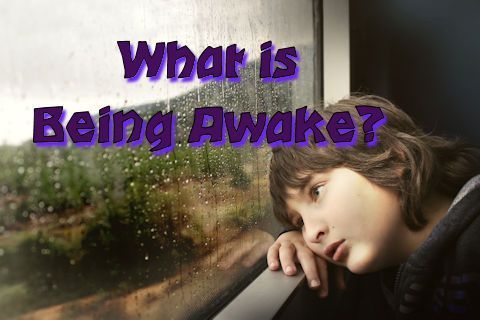
I imagine it could strike you as being a bit odd, all this talk of being awake. Because, like… aren’t we? Sure seems that we are.
Philosophers of all stripes have addressed this issue. In the Zen world, we have:
Once upon a time, I, Chuang Chou, dreamt I was a butterfly, fluttering hither and thither, to all intents and purposes a butterfly. I was conscious only of my happiness as a butterfly, unaware that I was Chou. Soon I awaked, and there I was, veritably myself again. Now I do not know whether I was then a man dreaming I was a butterfly, or whether I am now a butterfly, dreaming I am a man.
In my book, Half Asleep in the Buddha Hall, I discuss two other versions of this idea. Here’s a sample from that section:
“Francis Harold Cook describes the metaphor of Indra’s Net from the perspective of the Huayan School, in the book Hua-Yen Buddhism: The Jewel Net of Indra:
“Far away in the heavenly abode of the great god Indra, there is a wonderful net which has been hung by some cunning artificer in such a manner that it stretches out infinitely in all directions.
In accordance with the extravagant tastes of deities, the artificer has hung a single glittering jewel in each “eye” of the net, and since the net itself is infinite in dimension, the jewels are infinite in number. There hang the jewels, glittering like stars in the first magnitude, a wonderful sight to behold.
If we now arbitrarily select one of these jewels for inspection and look closely at it, we will discover that in its polished surface there are reflected all the other jewels in the net, infinite in number.
Not only that, but each of the jewels reflected in this one jewel is also reflecting all the other jewels, so that there is an infinite reflecting process occurring.”
(I am about to play fast and loose with this story—because traditionally Indra’s Net is ‘really’ about interconnection. Or is it?)
As I look into one jewel—‘my jewel’—I believe that it, and it alone, is the ‘real’ jewel. I assume that all of the stuff I see reflected in my jewel is the one and only, infinite reality. I also assume that my jewel contains everything else, and therefore that there is only one perspective. Mine.
This is similar to the story presented in Plato’s Cave.
Imagine prisoners, who have been chained since their childhood deep inside a cave: not only are their limbs immobilized by the chains; their heads are chained in one direction as well so that their gaze is fixed on a wall.
Behind the prisoners is an enormous fire, and between the fire and the prisoners is a raised walkway, along which puppets of various animals, plants, and other things are moved along. The puppets cast shadows on the wall, and the prisoners watch these shadows. When one of the puppet-carriers speaks, an echo against the wall causes the prisoners to believe that the words come from the shadows.
The prisoners engage in what appears to us to be a game: naming the shapes as they come by. This, however, is the only reality that they know, even though they are seeing merely shadows of images. They are thus conditioned to judge the quality of one another by their skill in quickly naming the shapes, and dislike those who play poorly.
Suppose a prisoner is released and compelled to stand up and turn around. At that moment, his eyes will be blinded by the sunlight coming into the cave from its entrance, and the shapes passing by will appear less real than their shadows…
Once enlightened, so to speak, the freed prisoner would not want to return to the cave to free “his fellow bondsmen,” but would be compelled to do so. Another problem lies in the other prisoners not wanting to be freed: descending back into the cave would require that the freed prisoner’s eyes adjust again, and for a time, he would be one of the ones identifying shapes on the wall. His eyes would be swamped by the darkness, and would take time to become acclimated. Therefore, he would not be able to identify the shapes on the wall as well as the other prisoners, making it seem as if his being taken to the surface completely ruined his eyesight. [The Republic bk. VII, 516b-c; trans. Paul Shorey]
Let’s pick up from where we left things in the last chapter: At the fundamental stage, each person is enmeshed in Indra’s Net. Each looks straight ahead at their jewel, and it appears that it is the only reality, containing everything and everyone. There-fore, the other jewels and ‘jewel lookers’ reflected in an individual jewel seem to be a part of one system.
Lacking another perspective, what we see is what we believe.
It is the same thing for the people in Plato’s Cave. They thought the moving reflections on the wall were both ‘true’ and the ‘real,’ external universe. One man goes out of the cave and sees what’s out there. Excitedly, he rushes back inside and says, “This shadow play on the wall is not real, but rather a pale reflection of what is outside this cave.” He is heard, but not believed—he’s judged delusional, because what he describes would obviate the ‘shadow universe’ right in front of the cave dwellers. The inhabitants are not ready for this paradigm shift, so they go back to staring at the shadows on the wall.
As individuals, we have no way of knowing what others see, although ‘fundamental’ social convention dictates that we pretend that we do. Example: does ‘love’ mean the same to a monk, a spouse, and a spouse-beater? Of course not.
The only way to see the true nature of Indra’s Net is to step back from it, thus seeing all of it. Since by definition it stretches infinitely in all directions, it seems impossible to escape its strands.
The release from the Net happens when you move your focus.
Picture a vast Net. It has infinite stands, which meet and join where the strings cross. These meeting-places are also infinite. At each meeting-place, there is one jewel.
Thus, there are infinite threads, infinite meeting-places, and infinite jewels, extending infinitely.
Got it? OK. Now, each jewel contains a reflection of the en-tire net, stretching infinitely.
If you picture yourself staring into a single jewel, which we’ll call “your jewel,” at your place in the Net, it seems that what you are seeing reflected in the jewel’s face is all there is. Right in front of your eyes is one jewel (which is your ‘reality’,) and it is ‘obvious’ (to you!) that your jewel seems to contain everything and everyone.
Now, imagine looking away from what is right in front of you. You now directly experience countless others, staring into their jewels. They do not notice you staring, because the beauty of the infinite Net they see reflected in their jewel transfixes them (as it transfixed you, before you looked away!) You realize, with a jolt, that they think that their jewel contains everything, including you! How can this be? You know that your jewel is the ‘right’ jewel, containing them!
You begin to doubt. Perhaps there is more to this than meets the eye! Your first doubt is that everyone ‘sees’ (believes) the same thing. Second, you begin to question whether you, and you alone, possess the truth, the ‘real’ jewel. You are suddenly aware of infinite perspectives, views, choices, and realities.
You ask, “So which infinite is the real infinite, or does each infinite contain all of the other infinites? And yet, one jewel containing all of the infinites is still one jewel of an infinite number. What if all views, and none, are true? What if all that each jewel is, is part of a larger thing, which I cannot see until I stop staring into my own jewel?”
Head numb yet?
This is a mind experiment you can use to evaluate the ‘fundamentalist’ reality, in which each thinks their rules, their jewel, and their perspective, is ‘true.’ Religions play this game all the time: ‘My guy is the right guy, and your guy is a false prophet!”
Fundamentalists believe that their worldview is ‘infinite, exclusive, and correct.’ You know this because fundamentalists of any stripe are so willing to try to stuff their beliefs down other people’s throats. They puzzle themselves over the inability of others to see things their way. Some are actually more than willing to kill an unbeliever.
At the same time, the ‘others’ that they are trying to cram their views into cannot see anything other than the jewel they are staring into. They will not change because their own jewel, to them, is ‘true,’ and yours is ‘false.’ And they puzzle themselves over your inability to see things their way. They are more than willing to kill you… an unbeliever.
Until you step back. And see the Net. And see the jewels and the infinite possibilities. Then, you begin to grasp that your view is simply a view of a small segment of the whole.
Once you ‘get’ this, you understand the futility of trying to force others to see it your way. And that is wisdom. Therefore, you stop trying! You see that your only task is to turn your head, open your eyes, and see! Once you see the bigger picture, you can choose to be ‘at one’ (present) with that which underlies every-thing, including the Net. This is ‘waking up,’—this is Peck’s Mysticism stage.
Warning: you know you are back to being caught in the Net every time you think or say, “But why can’t they see it? It is so obvious! I am only pointing out their errors because I’m evolved!” You un-catch yourself by living your understanding, rather than delivering a lecture.
Step back and see the Net, as well as what creates and underlies the Net. The energy that underlies the Net and the ‘10,000 things,’ (everything in the known and unknown universes) is what the Taoists call (obviously…) Tao.
Phew! Big section I gave you there. If you haven’t, you really need to read my book, Half Asleep in the Buddha Hall!
For now, let me just say this: the ideas captured above cross millennia and philosophies. The idea of “waking up” has been prevalent forever, and the “waking up” is from illusion. And the chief illusion is that “I” possess truth.
About anything, including about myself.
I was thinking about last week’s article, the gist of which is that what we know about ourselves is actually a patchwork narrative. A selected batch of stories, tenuously stitched together. As long as we recognize this stitched-together-fictional nature, no harm, no foul.
When we insist on it’s truth, we get into trouble.

Waking up is coming to this realization, and at the same time realizing that “everyone and everything” is in the same boat. It’s all butterfly dreams. This is this, and that is that, and none of it is actually anything.
Now, I’m not suggesting that the way we see things isn’t useful… knowing to stop at a stop sign is a good thing! It’s however, a useful fiction. A collective, helpful story.
Where this gets interesting is when we apply this same idea to our beliefs.
Our beliefs are convenient fictions, too. This is easily demonstrable. This week, I watched Sarah Palin endorse Donald Trump. Alternating between gagging and laughing, I none-the-less understood this:
But… but… it’s not just them! It’s me, too!
I fall back into Plato’s Cave if I do not “get” that all of us are wrong, right, confused, clear — all at the same time. All stories, all the time. There is nothing here worth killing each other over.
This week, breathe into your stories, and see if you can hold them loosely, and with a bit of humour. Then, try the same thing with someone you disagree with. (Lordy. I’m going to practice with Trump.) Breathe, and hold their beliefs loosely, too.
And then, without rancour or judgement, do the only important thing. Decide how you will act, how you will be, and see if you can do so without making a religion out of it.
Not even the religion of no religion!
div.wpob_template_main.wpob_template_main_1{display: none;}
.wpob_template_main_1{
background-color: #fff;
max-width: 750px;
height: 310px;
border-width: 7px;
border-color: #ccc;
margin-top: ;
margin-bottom: ;
margin-left: ;
margin-right: ;
}
.wpob_template_main_1 .wpob_box_heading{
background-color: #8f0a0b;
}
.wpob_template_main_1 .wpob_box_heading_text{
font-family: 'Shadows Into Light', serif;
font-size: 24px;
line-height: 40px;
color: #fff;
text-align: center;
text-transform: uppercase;
font-weight: 900;
margin: 0;
}
.wpob_template_main_1 .wpob_box_media_container{
display: inline-block;
width: 120px;
height: 164px;
}
.wpob_template_main_1 .wpob_box_content_container{
}
.wpob_template_main_1 input.wpob_input_fields{
width: 200px;
line-height: 36px;
margin-bottom: 5px;
border: 1px #ddd solid;
vertical-align: middle;
font-size: 16px;
color: #999;
font-size: Arial;
padding: 0px 8px;
}
.wpob_template_main_1 .wpob_box_image{
width: 100%;
height: 100%;
}
.wpob_template_main_1 .wpob_box_media_center{
display: block;
margin: 0 auto;
padding: 10px;
}
.wpob_template_main_1 .wpob_box_media_right{
float: right;
padding: 10px 0px 10px 20px;
}
.wpob_template_main_1 .wpob_box_media_left{
float: left;
padding: 10px 20px 10px 0px;
}
.wpob_template_main_1 .wpob_box_content{
font-family: Fjalla One;
font-size: 18px;
line-height: 24px;
color: #333;
text-align: center;
padding: 1em;
}
.wpob_template_main_1 .wpob_box_button_div{
text-align: center;
padding: 0em 1em 1em 1em;
}
.wpob_template_main_1 .wpob_box_button_div a.wpob_box_button, .wpob_template_main_1 .wpob_box_button_div button.wpob_box_button{
font-family: Georgia;
font-size: 18px;
color: #fff;
background-color: #0c8442;
border-radius: 5px;
width: ;
padding: 10px 15px;
}
.wpob_button_gradient{background-image : -moz-linear-gradient(top, #0c8442, #057538);background-image : -ms-linear-gradient(top, #0c8442, #057538);background-image : -webkit-gradient(linear, #0c8442, #057538);background-image : -webkit-linear-gradient(top, #0c8442, #057538);background-image : -o-linear-gradient(top, #0c8442, #057538);background-image : linear-gradient(top, #0c8442, #057538);filter : progid:DXImageTransform.Microsoft.gradient(startColorstr="#0c8442", endColorstr="#057538", GradientType=0);border-color : +#0c8442 #057538 #057538;background-color : #0c8442;}
A Shameless Bribe!!

Receive The Pathless Path by e-mail!
As a thank-you, we'll send you a link to our pdf booklet, Exercises in Consciousness.
What could be better than that??
Cick and Join Us!
The post What is being awake? appeared first on The Pathless Path.
January 16, 2016
The Illusion of a Self
Synopsis: The Illusion of a Self — if your self is not real, what is?
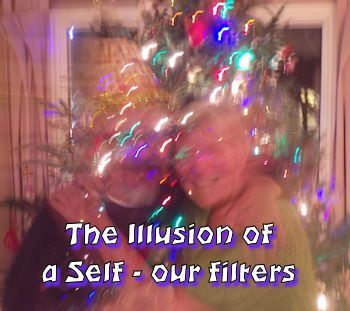
OK, so of course you have a self. You look in the mirror, and there you are. But really, what exactly are you?
I spotted a cartoon on Facebook today, (who knew Dennis the Menace was still being drawn?) that captures a bit of what I’m on about:
Hank Ketcham’s Classic Comic
Source: January 15, 2016

I had an “Of course!” moment, and saw the Zen of it. But the closer we get to “now,” the more we forget the reality of this. I mean, when we take a photo, we look at it, and say, “This is me, now!” We’re sure of it.
Yet, when I say, “But how is this different from Dennis’ point?” you might think I’m splitting hairs.

So, here’s a photo from my 65th birthday party, a week ago. Is this me, is this me now, is this me now only if I’m wearing that shirt?
Again, splitting hairs?
We tend to attach permanence to things, which is why we get all bent when things change.
This begins right after we are born, and people start telling us about ourselves:
“You are Wayne, you are male, you are a Protestant, you are smart, cute, you are able to do stuff, etc.”
“You are Sally, and you are female, Catholic, not so smart, homely, you can’t do much, but if you agree to what people want, you’ll get by.”
Whatever
Because the people telling us stuff are big, and we think they know something, we just absorb their story. As we get older, we start adding our own stuff. You can see this by thinking about your memories.
Most of us can’t remember back to our infancy; indeed, most of us start having concrete memories only after we are 2 or 3 or so. Let me be clear here. If you have a picture of a party you attended at 2, and mommy and daddy told you about the party later, that’s not a real memory.
Anyway, we tack on stuff, and create a story that we call “me.”
Except it’s not really real.
It takes great effort, but you can push yourself to remember stuff that you don’t normally remember, and if you add it, your story changes.
I remember a client telling me she’d never received a compliment or praise growing up, and still wasn’t. But therapy was helping her to listen better and to shift her thinking. One day, she heard a compliment. She watched herself attempting to disregard it, and didn’t.
By the next week she was hearing lots of compliments, and remembering ones from her past.
So, which was the true story?
And here’s where it gets interesting. We see ourselves through the filters of the stories and beliefs we have about ourselves. Even when we make a profound shift of self-understanding, all that’s really happened is that we’ve applied another set of filters. “This one is really me!”
Nope.
The odd, scary, interesting, truth (according to my version, or filter) is that you are always and only how you are right now. There is no fixed entity I can point to, no “Wayne.” I am sort of like a scrapbook.
Analogy alert!
I really am a scrapbook, and so are you. My mom and dad started it, filling it what they liked about me. Or better, filled it with what they valued. I was “lucky,” because they filled it with “good” stuff, but still, the early pages are theirs.
Then, I started adding stuff. Initially, I followed their patterns. As I got older, I “rebelled” and added stuff that they wouldn’t approve of. Then, “adult” stuff, relationship stuff, etc.
I sit here at 65 with a big scrapbook, with Wayne on the cover. See? Me!!!
And all around me, in piles so high that they cannot be fathomed, is all the stuff that has happened that I’ve ignored, or intentionally missed, or rejected. All the alternate versions of “reality.” I’m all of that too, even though I may not want to add it to the book.
There is even a pile, a huge one, of stuff I am unaware of, like what happened as I engaged, in the past, with friends
.
I remember Facebooking a guy I knew in College, and thanking him for teaching me to appreciate Jazz and the Blues. He thanked me for all I’d done for him, and specifically for teaching him to process film and to appreciate art.
I’d completely forgotten both of those things, which were of profound importance to him. They were (until he reminded me) not a part of my scrapbook–although they are now.
The reason getting this is so important is that we are not a fixed entity, but are more like water. We are flowing along, clear on some stuff, oblivious to other stuff.
Our goal is to acknowledge this, and to begin to pay attention. If we say stuff (“That’s how I am.”) and then limit ourselves from acting, well, that’s kind of silly. If we become fluid, we might just choose to grab on with both hands to something, or someone!, different.
This week, see if you can hold your self-story loosely, and experiment with being a process, as opposed to a scrapbook.
You just might surprise yourself.
div.wpob_template_main.wpob_template_main_1{display: none;}
.wpob_template_main_1{
background-color: #fff;
max-width: 750px;
height: 310px;
border-width: 7px;
border-color: #ccc;
margin-top: ;
margin-bottom: ;
margin-left: ;
margin-right: ;
}
.wpob_template_main_1 .wpob_box_heading{
background-color: #8f0a0b;
}
.wpob_template_main_1 .wpob_box_heading_text{
font-family: 'Shadows Into Light', serif;
font-size: 24px;
line-height: 40px;
color: #fff;
text-align: center;
text-transform: uppercase;
font-weight: 900;
margin: 0;
}
.wpob_template_main_1 .wpob_box_media_container{
display: inline-block;
width: 120px;
height: 164px;
}
.wpob_template_main_1 .wpob_box_content_container{
}
.wpob_template_main_1 input.wpob_input_fields{
width: 200px;
line-height: 36px;
margin-bottom: 5px;
border: 1px #ddd solid;
vertical-align: middle;
font-size: 16px;
color: #999;
font-size: Arial;
padding: 0px 8px;
}
.wpob_template_main_1 .wpob_box_image{
width: 100%;
height: 100%;
}
.wpob_template_main_1 .wpob_box_media_center{
display: block;
margin: 0 auto;
padding: 10px;
}
.wpob_template_main_1 .wpob_box_media_right{
float: right;
padding: 10px 0px 10px 20px;
}
.wpob_template_main_1 .wpob_box_media_left{
float: left;
padding: 10px 20px 10px 0px;
}
.wpob_template_main_1 .wpob_box_content{
font-family: Fjalla One;
font-size: 18px;
line-height: 24px;
color: #333;
text-align: center;
padding: 1em;
}
.wpob_template_main_1 .wpob_box_button_div{
text-align: center;
padding: 0em 1em 1em 1em;
}
.wpob_template_main_1 .wpob_box_button_div a.wpob_box_button, .wpob_template_main_1 .wpob_box_button_div button.wpob_box_button{
font-family: Georgia;
font-size: 18px;
color: #fff;
background-color: #0c8442;
border-radius: 5px;
width: ;
padding: 10px 15px;
}
.wpob_button_gradient{background-image : -moz-linear-gradient(top, #0c8442, #057538);background-image : -ms-linear-gradient(top, #0c8442, #057538);background-image : -webkit-gradient(linear, #0c8442, #057538);background-image : -webkit-linear-gradient(top, #0c8442, #057538);background-image : -o-linear-gradient(top, #0c8442, #057538);background-image : linear-gradient(top, #0c8442, #057538);filter : progid:DXImageTransform.Microsoft.gradient(startColorstr="#0c8442", endColorstr="#057538", GradientType=0);border-color : +#0c8442 #057538 #057538;background-color : #0c8442;}
A Shameless Bribe!!

Receive The Pathless Path by e-mail!
As a thank-you, we'll send you a link to our pdf booklet, Exercises in Consciousness.
What could be better than that??
Cick and Join Us!
The post The Illusion of a Self appeared first on The Pathless Path.
January 9, 2016
The Paradox of Completeness
Synopsis: paradox of completeness — things are in the state that they are in — part of a process, not incomplete

My book, Living Life in Growing Orbits is freshly revised and available both as a paperback and a Kindle book.
Living Life in Growing Orbits is a Workbook for people seeking clarity and focus. In an often confusing world, pure, simple, and focused guidance is required.
Living Life in Growing Orbits is a guidebook for discovering who you are, and more, importantly, the tool you need to become fully yourself.
• If you are wondering what, specifically, to do to learn more about who you are, who you might be, and about your place in the world, this book is for you.
• If you have read books on wholeness, personal responsibility, or spiritual insight, and then have wondered, “What’s next?” — this book is for you.
• If you seek wholeness, but are unclear on how to begin , this book is for you.
• If you want elegant, day-by-day guidance to maintain a practice designed to open your eyes, your heart, your mind and Spirit, this book is for you!
In 52 weeks, you will have found direction and purpose, as you explore the meaning of centered, meaning-filled, and “present” living.
With weekly thoughts, and daily meditations and projects, Living Life in Growing Orbits: 52 Weeks to Wholeness will change your life.
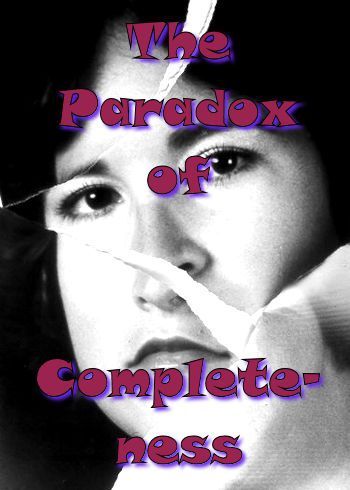
I think one of the most important things we can learn to do is to suspend judgement. Notice the word “suspend.”
I have in the past taught meditation, and even have a basic video up on YouTube. And I remember a few people who would complain that meditation wasn’t “getting them anywhere.” Or words to that effect.
It was and is hard to explain that meditation is goal-less. It’s not a contest, not a test of endurance, and there are no “results.” You sit in order to sit. More on this in a couple of weeks.
I never could come up with a plausible explanation about this
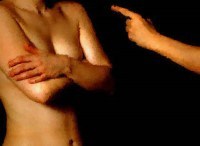
…and this is my impartial judgement…
Black and white thinking is to “blame,” in a sense, as we drop whatever into the great judgement blender, hit “high,” and see what pours out. We are conditioned to think that everything ought to mean something, and ought to be going somewhere, and ought to be getting us positive results.
So, for example, you put your relationship through this exercise in “rightness,” or “fitness,” and judge both the relationship and your partner. You assume that you are doing this both honestly, and impartially.
Except you aren’t, because we can’t
Suspending judgement is all about figuring out what your insides feel like when you are judging, and then just watching for a bit. Not to find something else to judge about, but to watch the internal processes, the convolutions, required to keep on judging.
Usually when I broach this idea, some people will tie their knickers in a knot, and think that I’m saying that they have no right to judge. By this they mean have no right to prefer one thing over another. This is not the case.
The piece I’m pushing you to acknowledge is that all judgement is a characteristic of your self. By this I mean, it’s your game.
It never has to do with what you are judging. Ever.
I think, at some level, we know this, which is why, when pressed, people start dragging in outside references, such as “Everyone knows…” or “I read a book that said…” or “My group of people believe…” And this is why holidays with the family can be so messy.
You’ve no doubt had the experience of “going home,” and hearing a relative describe a situation you were a part of… except! They have it all wrong! It didn’t happen that way!
Suspending judgement is all about figuring out what your insides feel like when you are judging, and then just watching for a bit.
If you are silly, you try to smarten them up. As in, get them to buy your version, which of course is factually true, and un-embellished. Yeah, right.
Anyway, I think you get my point. And the same is true for everything we confront.
We need to take the time to just see ourselves in action, then, and smile. And to remind ourselves that, right at this moment, everything is complete. And everything is a part of a process that ends when you die.

I’m sitting in the guest bedroom at my mom-in-law’s, and I just looked up and saw two family photos, one from around 1990, the other from 1996. The older people in the photo, like me, look similar (except in 1996 I’d briefly shaved off my beard and mustache.) My niece and nephew, on the other hand…
In the first photo, they both look like little kids. In the second, they are 12 and 10. Lisa is only a couple of inches shorter than me.
OK, so were they incomplete in the older photos?
No, you say, rolling your eyes at me.
Well, why or why not?
When you pop into judgement, say, about your relationship, you are saying, in effect, “Back then (when I was happily relating) it was “complete” (good, functional, whatever) and now it sucks.” This would be the equivalent of my saying that my niece and nephew were “wrong” in 1996.
So, what am I looking for here?
Try this, (using our relationship example): “Before, it was complete the way it was, and now it is complete the way it is. I have changed, and complete, for me, right now, is (for example) to leave.”
In other words, to be honest. What is going on for you right now is what is going on for you right now. It is not dictated by the behaviour of others, nor of the world. How you “be” and how you act is determined solely by you, and it is complete.
If you are not dead, it and you will also change, and then you will be something else. Again, dictated by you and your processes.
Like my niece and nephew, who changed from kids into adults, and are who they are today is based solely on their choices.
Keep an eye on your judgements; how quickly you jump into blame or shame. Notice how you mess with yourself, and then try to justify it by finger pointing. Just sit with your pull toward making “now” wrong or incomplete.
Accept now as it is, and let it flow, as it always does, into another now. Breathe, and just be with it.
Then, with a clear head, decide what to do next, to complete what is already complete.
div.wpob_template_main.wpob_template_main_1{display: none;}
.wpob_template_main_1{
background-color: #fff;
max-width: 750px;
height: 310px;
border-width: 7px;
border-color: #ccc;
margin-top: ;
margin-bottom: ;
margin-left: ;
margin-right: ;
}
.wpob_template_main_1 .wpob_box_heading{
background-color: #8f0a0b;
}
.wpob_template_main_1 .wpob_box_heading_text{
font-family: 'Shadows Into Light', serif;
font-size: 24px;
line-height: 40px;
color: #fff;
text-align: center;
text-transform: uppercase;
font-weight: 900;
margin: 0;
}
.wpob_template_main_1 .wpob_box_media_container{
display: inline-block;
width: 120px;
height: 164px;
}
.wpob_template_main_1 .wpob_box_content_container{
}
.wpob_template_main_1 input.wpob_input_fields{
width: 200px;
line-height: 36px;
margin-bottom: 5px;
border: 1px #ddd solid;
vertical-align: middle;
font-size: 16px;
color: #999;
font-size: Arial;
padding: 0px 8px;
}
.wpob_template_main_1 .wpob_box_image{
width: 100%;
height: 100%;
}
.wpob_template_main_1 .wpob_box_media_center{
display: block;
margin: 0 auto;
padding: 10px;
}
.wpob_template_main_1 .wpob_box_media_right{
float: right;
padding: 10px 0px 10px 20px;
}
.wpob_template_main_1 .wpob_box_media_left{
float: left;
padding: 10px 20px 10px 0px;
}
.wpob_template_main_1 .wpob_box_content{
font-family: Fjalla One;
font-size: 18px;
line-height: 24px;
color: #333;
text-align: center;
padding: 1em;
}
.wpob_template_main_1 .wpob_box_button_div{
text-align: center;
padding: 0em 1em 1em 1em;
}
.wpob_template_main_1 .wpob_box_button_div a.wpob_box_button, .wpob_template_main_1 .wpob_box_button_div button.wpob_box_button{
font-family: Georgia;
font-size: 18px;
color: #fff;
background-color: #0c8442;
border-radius: 5px;
width: ;
padding: 10px 15px;
}
.wpob_button_gradient{background-image : -moz-linear-gradient(top, #0c8442, #057538);background-image : -ms-linear-gradient(top, #0c8442, #057538);background-image : -webkit-gradient(linear, #0c8442, #057538);background-image : -webkit-linear-gradient(top, #0c8442, #057538);background-image : -o-linear-gradient(top, #0c8442, #057538);background-image : linear-gradient(top, #0c8442, #057538);filter : progid:DXImageTransform.Microsoft.gradient(startColorstr="#0c8442", endColorstr="#057538", GradientType=0);border-color : +#0c8442 #057538 #057538;background-color : #0c8442;}
A Shameless Bribe!!

Receive The Pathless Path by e-mail!
As a thank-you, we'll send you a link to our pdf booklet, Exercises in Consciousness.
What could be better than that??
Cick and Join Us!
The post The Paradox of Completeness appeared first on The Pathless Path.
January 2, 2016
A Way Inside: red pill, blue pill
Synopsis: red pill, blue pill is a choice from the movie The Matrix, and an important one to both recognize and make
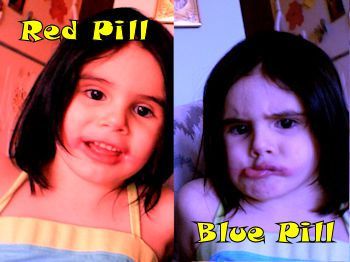
You likely know that, “red pill, blue pill was a choice made famous in the movie “The Matrix.” As the story unfolds, we discover a future earth that is run by machines. They need the heat and nutrients human bodies can provide, and so, they’ve placed each human in a tube.
The humans are wired into the matrix, a computer simulation, and, from within the matrix, it all seems so real. Except for the glitches.
Neo, the protagonist played by Keanu Reeves, is experiencing such a glitch. He’s getting a whiff that something isn’t quite right with the picture he’s seeing. He starts, slowly, to peel back the curtain on the matrix. Sorta like Dorothy does, in the Wizard of Oz.
Morpheus (Laurence Fishburn) shows up, and holds out his hand. Red pill, blue pill.
Morpheus: “This is your last chance. After this, there is no turning back. You take the blue pill—the story ends, you wake up in your bed and believe whatever you want to believe. You take the red pill—you stay in Wonderland, and I show you how deep the rabbit hole goes. Remember: all I’m offering is the truth. Nothing more.”
From a Zen perspective, this is the choice between awake and asleep.
It’s a real challenge, this. Most people, when given such a choice, reach for the blue pill — for the comfort of the known, the rules of the herd, the security offered by “the state,” (the matrix writ large.)
Or, they hope for a pill that’s half and half.
There is no question that blue pill is easier. Not questioning what’s going on is always easier. It also makes it easy for a bloviating airhead like Trump to attract so much support.
Think about it. His pitch is to the dis-satisfied. And what are they dissatisfied with? That the matrix they were promised–the one they chose, seems to be coming apart. There are cracks in the matrix, and rather than question the matrix, they want things to “be the way they were.”
But let’s just stick to the personal, as opposed to the political.
Morpheus says:
I know exactly what you mean. Let me tell you why you’re here. You’re here because you know something. What you know you can’t explain, but you feel it. You’ve felt it your entire life, that there’s something wrong with the world. You don’t know what it is, but it’s there, like a splinter in your mind, driving you mad. It is this feeling that has brought you to me. Do you know what I’m talking about?
Of course we do
That splintery feeling is real, and likely has led to most of the things that surround us. Machines, medicines, inventions of all sorts. It’s the itch that need a good scratch.
Until we get to the biggie: who we are and how we shall live? Then, it’s “Katie, bar the door.”
Marx famously wrote that religion is the opiate of the people. Well, of course, as is most everything designed to blue pill us into submission. I stumbled upon a couple of 18-year-olds on Instagram. They’re each heading into their second semester at College, and have similar complaints:
1. School is hard. There are expectations. Deadlines.
2. They are self-declared feminists, and are not to be questioned about their beliefs, because:
a. they are female
b. they have read books
3. The expectations of their colleges are set by white males, so of course are suspect.
4. Everyone in the world should see what they see, and immediately change.
I’m not really mocking them, because I am a “child of the 60s,” and we believed the same stuff about College, our elders, etc. We protested, we marched, we expounded. And then, the majority of us bought into the system. Blue pill.
So, what’s up with that?

I could have sworn I was wearing slacks
Blue pill allows for a modicum of protest. It allows for demonization and blame. Because the best way to keep us imprisoned is to get us to blame others, and to make them responsible for our happiness (and they always fail, right?).
The last thing society wants is for people to discover that any prison is of their own making.
Red Pill
The Buddha was one of many who held out his hand, with the pill choice readily available. He learned from his own experience, and encouraged his followers to do the same: “…test what I say by trying it out.”
Religion, on the other hand, no matter which one, holds only one pill. A blue pill, designed by the bureaucrats, and structured to say, “Don’t question, don’t experiment, do it this way.”
The vast majority of my clients, for the 31 years I was in private practice, wanted blue pill fixes. They wanted me to fix their partner. They wanted me to “make them happy,” by waving a wand, I guess. I’d offer, endlessly, a red pill… hard work, a total change in perspective, and I’d get excuses.
Too hard, no time, you don’t understand, I’m special…
The few, well, they opened one eye just a crack, and they began to see the lies, the deceptions, the games… the matrix.
And all around them, hands outstretched, blue pills at the ready.
Over the next while, I’ll write about red pill thinking… about the alternative to being asleep… about the alternative to blaming others for who and where you are. I’m going to ask you to question what you believe, at a deep level, and to come to a self-responsible place.
You don’t have to become a Buddhist to do this work, although I tend to use Zen as a way to describe these principles. You don’t have to leave your religion or politics, or even leave your partner.
You just have to stop swallowing blue pills. Stop letting others tell you who to be, what to think, what to do.
And then… you gotta do it again. And again.
div.wpob_template_main.wpob_template_main_1{display: none;}
.wpob_template_main_1{
background-color: #fff;
max-width: 750px;
height: 310px;
border-width: 7px;
border-color: #ccc;
margin-top: ;
margin-bottom: ;
margin-left: ;
margin-right: ;
}
.wpob_template_main_1 .wpob_box_heading{
background-color: #8f0a0b;
}
.wpob_template_main_1 .wpob_box_heading_text{
font-family: 'Shadows Into Light', serif;
font-size: 24px;
line-height: 40px;
color: #fff;
text-align: center;
text-transform: uppercase;
font-weight: 900;
margin: 0;
}
.wpob_template_main_1 .wpob_box_media_container{
display: inline-block;
width: 120px;
height: 164px;
}
.wpob_template_main_1 .wpob_box_content_container{
}
.wpob_template_main_1 input.wpob_input_fields{
width: 200px;
line-height: 36px;
margin-bottom: 5px;
border: 1px #ddd solid;
vertical-align: middle;
font-size: 16px;
color: #999;
font-size: Arial;
padding: 0px 8px;
}
.wpob_template_main_1 .wpob_box_image{
width: 100%;
height: 100%;
}
.wpob_template_main_1 .wpob_box_media_center{
display: block;
margin: 0 auto;
padding: 10px;
}
.wpob_template_main_1 .wpob_box_media_right{
float: right;
padding: 10px 0px 10px 20px;
}
.wpob_template_main_1 .wpob_box_media_left{
float: left;
padding: 10px 20px 10px 0px;
}
.wpob_template_main_1 .wpob_box_content{
font-family: Fjalla One;
font-size: 18px;
line-height: 24px;
color: #333;
text-align: center;
padding: 1em;
}
.wpob_template_main_1 .wpob_box_button_div{
text-align: center;
padding: 0em 1em 1em 1em;
}
.wpob_template_main_1 .wpob_box_button_div a.wpob_box_button, .wpob_template_main_1 .wpob_box_button_div button.wpob_box_button{
font-family: Georgia;
font-size: 18px;
color: #fff;
background-color: #0c8442;
border-radius: 5px;
width: ;
padding: 10px 15px;
}
.wpob_button_gradient{background-image : -moz-linear-gradient(top, #0c8442, #057538);background-image : -ms-linear-gradient(top, #0c8442, #057538);background-image : -webkit-gradient(linear, #0c8442, #057538);background-image : -webkit-linear-gradient(top, #0c8442, #057538);background-image : -o-linear-gradient(top, #0c8442, #057538);background-image : linear-gradient(top, #0c8442, #057538);filter : progid:DXImageTransform.Microsoft.gradient(startColorstr="#0c8442", endColorstr="#057538", GradientType=0);border-color : +#0c8442 #057538 #057538;background-color : #0c8442;}
A Shameless Bribe!!

Receive The Pathless Path by e-mail!
As a thank-you, we’ll send you a link to our pdf booklet, Exercises in Consciousness.
What could be better than that??
Cick and Join Us!
The post A Way Inside: red pill, blue pill appeared first on The Pathless Path.
December 24, 2015
Letting Go of Boxes
Synopsis: Letting go of boxes: we all categorize, and sometimes that’s helpful, but examining our beliefs is the mark of maturity.

65 isn’t so bad…
So, here we are, at the end of another year, with no clue about the next one.
This is the last article of 2015; we’ll be back in early 2016.
Just to give you advance notice, I turn 65 January 3, so do drop me a line!
Feliz años nuevo!
I think that the most valuable thing to do on New Years Day is to state how little we know
As I think back on last New Year, (that one celebrated in Costa Rica,) I’m aware that most of the happenings this year were totally unexpected–many of them (in the world) were painful to say the least, and some were more than pleasant (Justin Trudeau pops into my head 
December 19, 2015
Faith, Fear, and Freedom
Synopsis: Faith, Fear, and Freedom — we get caught defending our beliefs, and then fearing others. Perhaps a bit more reflection might help…
I’ve done an update of my book, Living Life in Growing Orbits , and have now finished 1 of 2 edits. Ought to be ready by the New Year.
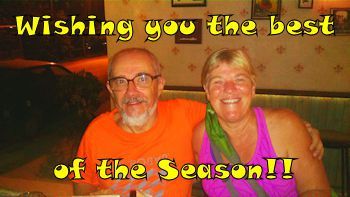
Darbella and I wish you a great holiday season! Thanks for reading, and do drop us a line.

So, because of the precarious state of the world, I’ve been thinking about the things we believe, and how belief in a system tends to get us in trouble.
Mostly, I think, because we tend to, when discussing “biggies,” (like religion or politics…) harden our heads, and argue from rigidity, as opposed to wisdom.
Anyway, as I mentioned above, I’m editing my book, Living Life in Growing Orbits, and came upon two “weeks,” or chapters — faith and fear. I thought they fit the topic at hand, and so, here they are.
Living Life in Growing Orbits is actually a workbook, and the structure is that there is a weekly theme, followed by daily thoughts and exercises.
Faith-Week 31
Faith, by its very nature, is faith in something. Yet, most people have faith about something. There is a profound difference here.
About implies description. Most people can describe what they have faith about, but are unable to demonstrate how they enact their faith.
More problematic, such people seem to be stuck with a list of rules they picked up from somewhere, which they then try to force others to follow.
True faith is not so much an intellectual agreement as it is a felt sense. Faith is a deep knowing that has very little to do with proof.
People of faith are people of wisdom. A wise person does not believe that there is something outside of them that has all their answers. Wisdom is recognizing that each of us has our own answers.
True faith is faith in ourselves. Because this makes us self-responsible, many run from this idea, as they think it is far better to have others (or some god) to blame.
The wise person understands that life simply is. There is not necessarily a reason for everything; there may not be a reason for anything. The wise person is content despite the ambiguity of life.
The wise person learns from life. If there is a purpose, it is that we learn to be adults. That we become mature. That we gain Mastery.
~~~
What do you have faith in?
Day 1
A Word from Uncle Wayne:
Imagine! You were given a life.
Now, you are expected to actually live it.
You are the sum of your talents, minus the talents you block yourself from using.
List your talents in one column, and the ways you block yourself in another.
Day 2
A Word from Uncle Wayne:
Life is a classroom.
I do believe that we are here to learn. I do not believe that bad things happen to test us. (Such thinking makes World War II concentration camps hard to explain.)
What lesson seems to be the one you have to learn, again and again?
Day 3
A Word from Uncle Wayne:
The wise person learns lessons the first time.
One of the marks of wisdom is the ability to see what is happening, and then to make corrections.
We all fail. The wise person simply dusts herself off, gets up, and changes direction, with no blame.
How many times have you corrected your course on the first try? List examples.
Day 4
A Word from Uncle Wayne:
Wisdom / faith does not create “no problems.”
How often have you heard someone say, “Boy, he must have really done something wrong for this to happen.” Phooey. Things happen. The mark of wisdom is in the recovery.
How do you recover?
Day 5
A Word from Uncle Wayne:
Find your faith.
Faith is internal, and is reached through meditation and focus. Faith is a felt sense of peace, understanding, and contentment.
Find quiet time today, go inside, and find the place in your body where you feel your internal wisdom. Stay there for a bit.
Day 6
A Word from Uncle Wayne:
Remind yourself: you are nothing special.
Many play the game of “Why is this happening to me?” As in, “The world should treat me as if I were someone special.”
You aren’t. No one is.
Today, resolve to do “nobody special training.” (With thanks to Ram Dass for this idea!)
Day 7
A Word from Uncle Wayne:
Gaining wisdom is enough.
Let us get real here. Decide, today, what will mark success for you. Money? Possessions? Power? Prestige? All are dust. Sand.
Reset your goals. Pick something that lasts. Pick wisdom.
Fear-Week 32
Fear is faith’s opposite. Fear is the belief that we are victims. Fear comes from thinking other people can hurt you. Fear comes from thinking that external events can damage you.
Fear is a choice. Fear is not real, nor even particularly sensible.
Fear fades when confronted head on. Action defeats fear, as does a refusal to place blame.
Fear feeds upon itself, so its removal requires eliminating its root cause. We do this by rejecting victimizing ourselves, and we do that through self-responsibility.
If I do something wrong, I am response — able. I am able to respond by making amends, changes. If others wrongly blame me, I am response — able. I can refuse to play the blame game. I can refuse to get angry or get even. I can simply walk away. Leave.
The fearful person runs from self-responsibility, always in predictable ways-blame, hitting back, making excuses. And nothing changes. When you feel fear, then, ask, “Is this feeling appropriate or useful?”
Sometimes (rarely), it is-when you are threatened with physical assault, your fear triggers “fight or flight.” Otherwise, all fear accomplishes is delaying a response by keeping you stuck.
Tell yourself, “Now is the time to take personal responsibility–I will respond.”
~~~
What do you do, when fearful?
Day 1
A Word from Uncle Wayne:
“The only thing we have to fear is fear itself.”
Franklin Delano Roosevelt
Fear feeds on itself.
What are the things you fear? What are they about?
Day 2
A Word from Uncle Wayne:
Fear blocks wisdom.
Wisdom seeks solutions. Fear seeks nothing but more fear. No matter how scary it seems, the next step is always to take the next step.
Meditate on what might be a next step, for you.
Day 3
A Word from Uncle Wayne:
Fear makes victims.
We are living in the Era of the Victim. Everyone is looking for someone to blame for his or her fear, his or her pain, and his or her failures. As we become mature, however, we have to give up victim-think. Victims wait for rescuers. The wise become response — able, and cre-ate change.
When do you feel like a victim? How old are you again?
Day 4
A Word from Uncle Wayne:
Fear makes us deaf and blind.
Fear draws us inward, to our internal theatre, where the fear plays with us, and cuts us off from the world. In that moment, we become helpless.
Think of a time when you were so tuned into your fear that you missed what was happening in the “real” (the physical) world. Today, vow to stay tuned in.
Day 5
A Word from Uncle Wayne:
Light defeats fear.
The light of knowledge, understanding, and wisdom defeats fear, every time. Light (enlightenment) comes to those who seek it, ask for it, and know who to talk to when stuck.
Today, list three people farther along the path than you, whom you would trust to help you when you are fearful. Ask them if they will do that for you.
Day 6
A Word from Uncle Wayne:
Wisdom defeats fear, using “Aikido of the mind.”
If you have ever watched an Aikido Master, you will notice that she simply redirects that which comes toward her. No matter what comes in, no matter how hard, the Master turns and redirects it.
No one controls you without your permission. (Memorize this!) See yourself, today, as someone who deflects attacks. Then try it. It works.
Day 7
A Word from Uncle Wayne:
Be of good cheer.
In the end, the mark of a wise soul is her or his ability to find joy and laughter amid difficulties. Seek the spring of joy that flows through you. Laugh a bit. Then, laugh some more. The fear will pass.
div.wpob_template_main.wpob_template_main_1{display: none;}
.wpob_template_main_1{
background-color: #fff;
max-width: 750px;
height: 310px;
border-width: 7px;
border-color: #ccc;
margin-top: ;
margin-bottom: ;
margin-left: ;
margin-right: ;
}
.wpob_template_main_1 .wpob_box_heading{
background-color: #8f0a0b;
}
.wpob_template_main_1 .wpob_box_heading_text{
font-family: 'Shadows Into Light', serif;
font-size: 24px;
line-height: 40px;
color: #fff;
text-align: center;
text-transform: uppercase;
font-weight: 900;
margin: 0;
}
.wpob_template_main_1 .wpob_box_media_container{
display: inline-block;
width: 120px;
height: 164px;
}
.wpob_template_main_1 .wpob_box_content_container{
}
.wpob_template_main_1 input.wpob_input_fields{
width: 200px;
line-height: 36px;
margin-bottom: 5px;
border: 1px #ddd solid;
vertical-align: middle;
font-size: 16px;
color: #999;
font-size: Arial;
padding: 0px 8px;
}
.wpob_template_main_1 .wpob_box_image{
width: 100%;
height: 100%;
}
.wpob_template_main_1 .wpob_box_media_center{
display: block;
margin: 0 auto;
padding: 10px;
}
.wpob_template_main_1 .wpob_box_media_right{
float: right;
padding: 10px 0px 10px 20px;
}
.wpob_template_main_1 .wpob_box_media_left{
float: left;
padding: 10px 20px 10px 0px;
}
.wpob_template_main_1 .wpob_box_content{
font-family: Fjalla One;
font-size: 18px;
line-height: 24px;
color: #333;
text-align: center;
padding: 1em;
}
.wpob_template_main_1 .wpob_box_button_div{
text-align: center;
padding: 0em 1em 1em 1em;
}
.wpob_template_main_1 .wpob_box_button_div a.wpob_box_button, .wpob_template_main_1 .wpob_box_button_div button.wpob_box_button{
font-family: Georgia;
font-size: 18px;
color: #fff;
background-color: #0c8442;
border-radius: 5px;
width: ;
padding: 10px 15px;
}
.wpob_button_gradient{background-image : -moz-linear-gradient(top, #0c8442, #057538);background-image : -ms-linear-gradient(top, #0c8442, #057538);background-image : -webkit-gradient(linear, #0c8442, #057538);background-image : -webkit-linear-gradient(top, #0c8442, #057538);background-image : -o-linear-gradient(top, #0c8442, #057538);background-image : linear-gradient(top, #0c8442, #057538);filter : progid:DXImageTransform.Microsoft.gradient(startColorstr="#0c8442", endColorstr="#057538", GradientType=0);border-color : +#0c8442 #057538 #057538;background-color : #0c8442;}
A Shameless Bribe!!

Receive The Pathless Path by e-mail!
As a thank-you, we’ll send you a link to our pdf booklet, Exercises in Consciousness.
What could be better than that??
Cick and Join Us!
The post Faith, Fear, and Freedom appeared first on The Pathless Path.
December 10, 2015
Taoism 101
Synopsis: Taoism 101 — finding a moment of peace in a weird and fractured world.
Well, we’re back in Canada, having had a quick and painless trip via WestJet. Little annoyances, like my phone pooching, means that Darbella and I (don’t ask why my phone pooching means Dar has a new one too 



